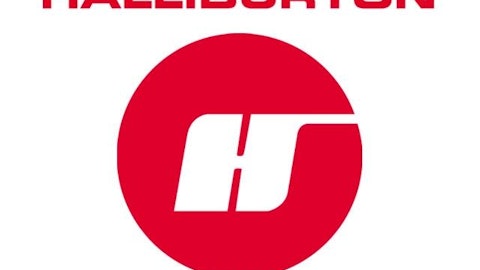The natural gas market continued to cool down as prices declined despite the cold weather. Will natural gas reach the low prices recorded at the first half of 2012? How will the prices of natural gas affect the major oil and gas producers such as Exxon Mobil Corporation (NYSE:XOM) and Chesapeake Energy Corporation (NYSE:CHK). Let’s explore these issues.

The extraction season is in midterm and is likely to continue in the next seven to ten weeks depending on how cold will the weather be in the coming weeks.
The natural gas storage is still higher than the five year average by nearly 12%, but due to the rise in withdrawal in recent weeks the storage is lower by almost 7% than in the parallel time in 2012. During January, the withdrawal from storage was 715 Bcf. In comparison, in January 2012 the withdrawal was 506 Bcf. Last year, however, was among the hottest winters on record. This was another contributing factor to the drop in natural gas prices during that year. The 2012/2013 winter doesn’t seem to be as hot as in 2011/2012. Therefore, the price of natural gas isn’t likely to plunge to the $2 mark as it did last year. On the other hand, the price isn’t likely to rally to the $4 mark, because this winter seems to be hotter than normal (for now). The extraction from storage in January 2011 was 744 Bcf and in 2010 it was 870 Bcf. If the amount of natural gas extracted from storage is an indication for the demand for natural gas, then the demand for natural gas this season is higher than in 2011/2012, but lower than in the preceding years.
The natural gas production continues to slowly rise at a slower pace than in 2011. One indication for the decline in natural gas production growth is the drop in number of rig counts, during last month the number of natural gas rigs fell by 11 to reach 428. In comparison, during the same time in 2012, the number of rig count was nearly 745. One of the reasons for the drop in rig count was the shift toward shale gas extraction. But the low prices, compared to the five year average, are also contributing to the shift from natural gas to oil rigs. During last month the number of oil rigs rose by 14 to reach 1,332 rigs. The current number of oil rigs is almost 7% higher than the same week last year.
Let’s examine how the drop in natural gas prices had affected leading oil and gas companies in the last quarter of 2012.
Chesapeake’s natural gas operations account for nearly half of its revenues. Despite the low price of natural gas the company’s production continued to rise: in the third quarter the company produced 381 Bcfe – a rise of 24% compared to the same quarter in 2011. I suspect this trend might change in the quarters to follow as the company may shift its business to rely more heavily on oil than natural gas.
Exxon, on the other hand, reduced its natural gas production in the fourth quarter by 8.3% compared to the parallel quarter in 2011. The total natural gas production available for sale reached 12,541 mcfd in the fourth quarter. The drop in production was mainly in the U.S, Europe, and Asia.
According to Chevron Corporation (NYSE:CVX) recent quarterly reports, its total revenues in the fourth quarter declined by 3.1% and by 5.6% during 2012. For Chevron, the natural gas revenues account for a smaller fraction from its total revenues, as oppose to Chesapeake, therefore the drop in natural gas prices had a small adverse effect on its revenues than it had on Chesapeake. In any case, Chevron’s sales in natural gas in last quarter of 2012 fell by 6.1% and by 4% during the year.
If the price of natural gas will remain around the $3 to $3.5 range – a much lower price than the five year average – this could induce Exxon, Chesapeake and other leading oil and gas companies to cut their natural gas production.
Natural gas prices are likely to remain at their current low price range of $3-$3.5. The higher than normal storage levels and the expected rise in production from shale gas are likely to keep natural gas prices low. The current weather might raise the demand for natural gas, but unless the temperatures will drop precipitately the price of natural gas won’t rally to the high levels recorded before 2011.
Disclosure: The author holds no positions in stocks mentioned and does not plan to initiate positions within 120 hours of the posting of this article. This article is to be used for educational, research and informational purposes only and does not constitute investment advice. There are no guarantees, expressed or implied, of future positive returns in regards to the subject matter contained herein. Understand the risks inherent in investing before making the decision to invest or consult an investment professional for more information. Reasonable due diligence has been performed in regards to the information in this article. However, the author expressly disclaims any liability for accidental omissions of information or errors in fact.
The article Will Natural Gas Fall to $2? originally appeared on Fool.com and is written by Lior Cohen.
Copyright © 1995 – 2013 The Motley Fool, LLC. All rights reserved. The Motley Fool has a disclosure policy.





